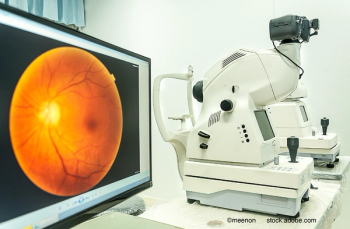
- Modern Retina Jan and Feb 2025
- Volume 5
- Issue 1
Transforming preinjection protocols
The role of compounded anesthetic formulations in streamlining efficiency and elevating patient care.
Intravitreal injections often feel overwhelming for patients and time-consuming for clinics. From scheduling frequent appointments to ensuring patients receive timely care, the complexity of the process can create stress for all involved. Intravitreal injection procedures are performed frequently in high-volume retina practices such as ours, and having an efficient and streamlined protocol is essential to improve workflow to reduce bottlenecks and maintain clinic productivity. Additionally, simplifying protocols may enhance the overall patient experience and reduce stress for patients and staff, allowing a practice to achieve greater efficiency while ensuring effective and consistent care. Both are crucial for enhancing patient satisfaction.
Essential components of a good protocol
An intravitreal injection protocol acts as a comprehensive guideline designed to ensure safety, efficacy, and some level of efficiency. It should, however, also consider patient comfort and needs, especially in light of injection frequency and patient adherence.
A typical preinjection process can be time-consuming, involving multiple steps. In our practice, we used topical proparacaine, pledgets soaked in lidocaine, Akten Ophthalmic Gel, and 5% betadine. Following the intravitreal injection, the eye was rinsed with sterile water. These steps took about 20 minutes for a procedure that lasted only seconds. Although effective, our protocol was cumbersome for both staff and patients. I had become accustomed to our practice’s approach, but I pondered how we could improve it could without compromising safety and effectiveness.
Although most steps of the preinjection protocol are mandatory, I started to consider ways in which our practice could streamline its process while maintaining the essential components, which include the following:
- Patient preparation. This includes ocular disinfection, anesthesia, and, depending on the doctor, speculum placement.
- Injection. A good injection technique ensures proper preparation of the drug, marking or visualizing the injection site, and sterility.
- Postinjection care. An after-injection protocol typically includes applying gentle pressure to the eye to prevent reflux, rinsing the eye, providing postprocedure instructions, and documenting the medication dose and injection site. Follow-up care, such as appointment scheduling, is also warranted.
When a fellow retina specialist recommended a compounded formulation combining sterilizing and numbing agents into 1 drop (povidone-iodine 1.25% and proparacaine 0.5%; Povicaine, ImprimisRx), I was open to trying it, given his 3-year experience with the agent as his sole method of injection preparation. I saw its use as a potential way to streamline our preinjection protocol’s efficiency and improve the patient experience.
A simpler path to patient comfort
Combining sterilization and anesthesia in a single formulation has eliminated the need for rinsing the eye, reduced patient discomfort from stinging Betadine, and given us precious time back in our workflow. Patients have also noticed the difference, often commenting on how much faster and smoother the procedure feels now. They appreciate clear vision immediately after the injection, with minimal time required to regain preinjection vision and less irritation on the day of their injection. For some, the removal of a cold-water rinse after injection—a particular nuisance—is the highlight.
As with any new protocol, adopting Povicaine required a learning curve. Initially, I was skeptical about how existing patients would react to a new system. After about 2 weeks of consistent use across various patient types, including those with sensitive eyes that often required extra numbing, my team had gained confidence in the product, and patients were consistently impressed with the process. The protocol was even easier with new patients—they had no frame of reference and quickly accepted the streamlined process as the standard.
At first, I was the only practitioner in my practice to incorporate the formulation. As the team gained confidence in the product, scaling its use became simpler. Rather quickly, a few of my colleagues introduced Povicaine into their preinjection protocols as well. We were all initially hesitant to consider a topical-only preinjection protocol, but learning how Povicaine is formulated was reassuring. Additionally, decreasing the number of times we touch the eye and maximizing sterility lower the risk of abrasions and injection-related infections.
Our practice is located in Orange County, California, and our patients have high standards regarding their medical care. We feel that offering a simplified preinjection protocol that features a single drop for sterilization and anesthesia meets and even exceeds those standards.
Enhancing efficiency in a busy clinic
Efficiency is critical in a vitreoretinal practice where dozens of injections are performed daily. Povicaine reduced the number of steps in our preinjection protocol, including the use of Akten, an eye rinse, and 5% betadine. (Although some of my colleagues still prefer to rinse the eye, the rinse time has been drastically reduced.) These changes have cut patient wait times and freed up staff for other tasks. By simplifying the process, we reclaimed valuable minutes per patient—time that adds up significantly in a busy clinic.
I have also found that making small adjustments, such as holding a cotton swab over the eye for 60 seconds after applying Povicaine, enhances the drug’s anesthetic effect, provides durability in the anesthetic effect, and ensures treatment consistency. Even minor tweaks make a big difference in patient comfort and satisfaction.
I still use subconjunctival lidocaine injections for those patients who are especially sensitive and have voiced unwillingness to tolerate any pain during the procedure. For those practices considering integrating a combination drop such as Povicaine, a great place to start is with easygoing and open-minded patients.
Additional tips for streamlining efficiency
Beyond adopting a product such as Povicaine, there are other ways to optimize workflow in a vitreoretinal clinic.
- Staff training. Ensure all technicians follow a standardized protocol to maintain consistency in patient care. This minimizes variability and improves efficiency.
- Technology integration. Leverage electronic medical records and
automated scheduling tools to streamline administrative tasks. - Team coordination. Establish clear communication between staff and providers to reduce delays between patient preparation and procedures.
- Patient education. Use handouts or videos to prepare patients for their appointments, to reduce time spent answering questions during visits.
Although we considered making our own formulation of povidone-iodine and proparacaine to further simplify our preinjection protocol, we felt it would not be safe. Betadine 1.25% has been shown to prevent bacterial infections1 without the adverse effects of burning, stinging, and irritation. We also were not convinced we could guarantee a consistent percentage of Betadine and proparacaine every time or sterility.
Consistency: The key to patient satisfaction
Patients appreciate predictability. They want every visit to feel as seamless as the last—no surprises and no discomfort. Including a compounded formulation of a sterilizing and numbing agent into a single drop has helped us deliver that consistency while prioritizing patient comfort and safety.
Ultimately, a streamlined protocol benefits everyone: Patients enjoy a more pleasant experience, and clinics operate more efficiently. By rethinking the basics of preinjection care, we have elevated the standard for patient comfort and operational excellence in our practice. •
Reference
1. Isenberg SJ. The ocular application of povidone-iodine. Community Eye Health. 2003;16(46):30-31.
Esther Lee Kim, MD
e: ekim@ocretina.net
Vitreoretinal Surgeon and Partner, Orange County Retina, Santa Ana, California
Financial interest: None
Articles in this issue
9 months ago
CVI definition: A work in progress9 months ago
Where might AI be heading?9 months ago
The power of home monitoringNewsletter
Keep your retina practice on the forefront—subscribe for expert analysis and emerging trends in retinal disease management.















































